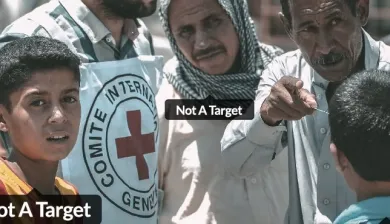IHL and human rights law
|
International humanitarian law (IHL) and international human rights law are two distinct but complementary bodies of law. They are both concerned with the protection of life, health and dignity. IHL applies in armed conflict, while human rights law applies at all times, in peace and in war. Both IHL and human rights law apply in armed conflicts. The main difference in their application is that international human rights law allows a state to suspend certain human rights if it is facing an emergency. IHL cannot be suspended (except as provided in Article 5 of the Fourth Geneva Convention). However, a state cannot suspend or waive certain fundamental rights that must be respected in all circumstances. These include the right to life, the right not to be subjected to torture, inhuman punishment or treatment, slavery or servitude, the principle of legality and the non-retroactivity of the law and the right to freedom of thought, conscience and religion. States have a legal duty to respect and implement both IHL and human rights law. Compliance with IHL requires a state to introduce national legislation to implement its obligations, train its military and prosecute those suspected of grave breaches of IHL. Human rights law also contains provisions requiring a state to take legislative and other appropriate measures to implement its rules and punish violations. IHL is based on the Geneva Conventions and their Additional Protocols, the Hague Conventions, a series of treaties governing means and methods of warfare, such as those banning blinding laser weapons, landmines and chemical and biological weapons, and customary law. International human rights law is more complex and, unlike IHL, includes regional treaties. The main global legal instrument is the Universal Declaration of Human Rights adopted by the UN General Assembly in 1948. Other global treaties include the International Covenant on Civil and Political Rights and the International Covenant on Economic, Social and Cultural Rights as well as treaties on the prevention and punishment of torture and other forms of cruel, inhuman or degrading treatment or punishment, on the elimination of racial discrimination and discrimination against women and on the rights of the child. Regional human rights conventions and charters have been adopted in Europe, the Americas, Africa and the Arab region. In armed conflict, human rights law complements and reinforces the protection afforded by IHL. |







